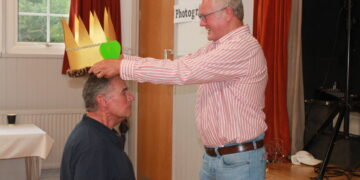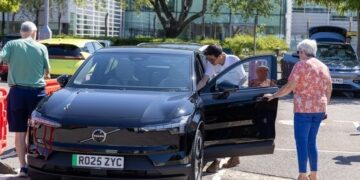AN ELDERLY resident is calling on the borough council to make footpaths accessible for wheelchair users.
Peter Ashcroft, 90, said that many paths in Wokingham town centre have metal barriers at their start and end points.
He said that this “street clutter” prevents access for wheelchair users and mothers with children in pushchairs.
Mr Ashcroft said that the barriers often force him to use busier routes.
“A major issues for myself is the entrance to Cockpit Path from Langborough Road,” he explained. “The barrier access to Cockpit Path prevents access to my double amputees son’s accommodation at Sale Garden Cottages.
“I’m forced to drive my mobility scooter through the busy town centre to access Sale Garden Cottages, from Denton Road.”
Mr Ashcroft said that he has been calling for accessibility improvements from Wokingham Borough Council for five years — but there has been no action.
He added: “For several years I have been reduced to driving a mobility scooter. Driving it through a busy town centre is harrowing to say the least.
“Street clutter and advertising boards are a health and safety issue that need to be addressed by the council.
“Plainly WBC is offending the 2010/12 equalities act by not making footpaths and the town centre safe for wheelchair users, the visually impaired and mothers with small children in baby carriages.”
Cllr Maria Gee, Liberal Democrat councillor for Wescott said the borough council committed to resolving the issue on Cockpit Path two years ago. But nothing has happened.
In email to the borough council, she said: “I am finding it tricky to have confidence in the system since works were promised for early 2020. I cannot tell you, without getting emotional, how absolutely disappointed I am in the council’s response to this issue.”
Cllr Gee said not actioning Cockpit Path barrier replacement is a “failure” of the council’s Public Sector Equality Duty, because the council has had “sufficient notice” to address the accessibility issue.
She added: “The failure to replace this gate in a timely manner, so as to allow a man in his nineties to gain easy access to his disabled son, is both repugnant and a tragedy.”
Cllr Pauline Jorgensen, executive member for highways and transport said it is not always possible to remove barriers when there are “reasonable alternative routes are available”.
She added: “The council is aware of the concerns raised about the accessibility of some footpaths and is preparing a programme of works to resolve these issues where possible.
“We must take into consideration the access and safety needs of all users.”
According to guidance from the Department for Transport, there are minimum pavement widths required for people with different needs.
The government department advises 75cm width for a person with a walking stick, 90cm width for someone with crutches or a walking frame, 1metre and 10cm for someone walking with an assistance dog, 1 metre and 20cm for a visually impaired person being guided by someone else, and 1metre, 50cm for someone in a wheelchair and their companion to move side-by-side.
















































